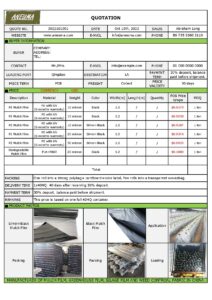Understanding Crop Diseases
To appreciate the role of mulch film in disease prevention, we must first understand the adversary it combats – crop diseases. These can be fungal, bacterial, or viral infections that wreak havoc on plants, leading to reduced yields and compromised quality. Factors like temperature, humidity, and the presence of disease-causing agents influence the development of these diseases.
How Mulch Film Works as a Disease Prevention Tool
Physical Barrier Against Pathogens
Mulch film acts as a physical barrier, creating a protective shield between the soil and the plant canopy. It prevents soil-borne pathogens from splashing onto the leaves and stems of plants during heavy rains or irrigation. By reducing direct contact with infected soil, mulch film effectively curtails disease transmission.
Soil Temperature and Moisture Regulation
Maintaining optimal soil conditions is crucial for preventing disease development. Mulch film regulates soil temperature, preventing extreme fluctuations that can stress plants and make them more susceptible to diseases. It also conserves soil moisture, reducing the risk of soil-borne pathogens thriving in excessively dry or wet conditions.
Preventing Soil Splash
Raindrops can be carriers of disease-causing agents. Mulch film intercepts these raindrops, preventing them from splashing soil onto plants. This simple yet effective mechanism significantly reduces the risk of foliar diseases caused by splashed soil.
Mulch Film Types and Their Disease Prevention Benefits
Mulch films come in various types, each with its unique disease prevention benefits.
Clear Mulch Film
Transparent mulch film allows sunlight to penetrate while creating a protective barrier. It’s particularly effective in preventing soil splash and maintaining uniform soil temperatures.
Colored Mulch Film
Colored mulch films influence soil conditions. For instance, red mulch film can stimulate early plant growth, while black mulch film can help regulate soil temperature and moisture.
Reflective Mulch Film
Reflective mulch films deter pests like aphids and whiteflies while reducing disease pressure. The reflective surface disorients these insects, making it harder for them to locate and infest plants.
Biodegradable Mulch Film
Biodegradable mulch films offer disease prevention benefits while being environmentally friendly. They break down naturally, eliminating the need for removal after the growing season.
Case Studies: Mulch Film in Disease Prevention
The effectiveness of mulch film in disease prevention is exemplified in numerous real-world cases. Farmers worldwide have reported significant reductions in disease incidence and improved crop health after adopting mulch film. Whether it’s tomatoes, strawberries, or cucumbers, mulch film has demonstrated its disease prevention prowess across various crops.
Best Practices for Disease Prevention with Mulch Film
To make the most of mulch film in disease prevention, certain best practices should be followed.
Proper Installation Techniques
Correctly installing mulch film is essential for disease prevention. It should be securely anchored to the ground to prevent pathogens from entering from the sides.
Choosing the Right Mulch Film Type
Selecting the appropriate mulch film type depends on the crop and local conditions. Consulting with experts can help in making the right choice.
Monitoring and Maintenance
Regular inspections and maintenance ensure that mulch film continues to provide effective disease prevention. Tears, holes, or loose edges should be promptly addressed to maintain its integrity.
Potential Challenges and Limitations
While mulch film is a valuable tool in disease prevention, there are some challenges and limitations to consider.
Environmental Considerations
The disposal and degradation of mulch film can pose environmental challenges. Researchers are actively working on developing more sustainable alternatives.
Cost and Resource Implications
Using mulch film involves initial costs and resource investments. Farmers must weigh these against the potential benefits in disease prevention and increased yields.
Integrated Pest Management
Mulch film should be part of an integrated pest management strategy that includes other practices like crop rotation and pest scouting for comprehensive disease prevention.
The Future of Disease Prevention in Agriculture
As agriculture continues to evolve, so does the role of mulch film in disease prevention. Ongoing research promises advancements in mulch film technology, making it even more effective in protecting crops from diseases. This innovation aligns with the broader goals of sustainable agriculture and food security, ensuring a greener, healthier future for both crops and the planet.
Conclusion
In the quest for sustainable and disease-resistant agriculture, mulch film emerges as a vital ally. Its multifaceted role in disease prevention, from shielding plants to regulating soil conditions, makes it a powerful tool for modern farmers. By embracing these innovations, farmers are not only safeguarding their crop health but also contributing to the goal of sustainable and resilient agriculture.

